-
Recent Posts
- Trump’s “Big Beautiful Bill” Is a Grotesque Giveaway to Fossil Fuel Billionaires While Adding $3.3 Trillion to Nation’s Debt
- Senator Chris Murphy Charges that Trump “Has Opened a Channel for Bribery”
- Congressman Casten: Trump’s Assault on the Rule of Law Is Causing Capital Flight Out of U.S. by Foreign Investors
- Trump’s Approval Rating Drops to 80-Year Low; IMF Says U.S. Tariffs Now Exceed the Highs During the Great Depression
- Nasdaq Has Lost More than 3,000 Points Since Trump’s First Full Day in Office in 2025; the Pain Has Barely Begun
- The Bond Crisis Last Week Was a Global No-Confidence Vote in U. S. President Donald Trump
- Trump’s Tariff Plan Guts $5 Trillion in Stock Value in Two Days; Senator Warren Calls for Emergency Action Before Markets Open on Monday
- Trump’s Attacks on Big Law, Universities, and the Media Have a Common Goal: Silence Dissent Against Authoritarian Rule
- Trump Administration Gives All Clear to Laundering Money through Shell Companies and Bribing Foreign Officials
- Four Megabanks on Wall Street Hold $3.2 Trillion in Uninsured Deposits – Which May Explain Senator Schumer’s Pivot to the GOP to Stop a Government Shutdown
- Here’s What Came Crashing Down Yesterday for Trump’s “Genius” Guy, Elon Musk: Tesla Stock, Access to Twitter (X), His Years of Secret Calls with Putin
- After Banning the Associated Press, Trump Is Now Targeting Specific Journalists That He Wants to See Fired
- Closely Watched Atlanta Fed Model Predicts Negative U.S. Growth in First Quarter
- Trump’s Gangster Diplomacy Makes Front Page Headlines Around the Globe
- Who Benefits Alongside Elon Musk If He Succeeds in Killing the CFPB: the Megabanks on Wall Street that Underwrite His Tesla Stock Offerings
- In Trump 1.0, the State Department Used Taxpayer Money to Publish a Book Elevating Elon Musk to a Superhero; It Was Funded by USAID, the Agency Musk Wants to Quickly Shut Down
- News Host Joy Reid Raises Threat of Trump Selling U.S. to Putin; Ten Days Later Her Show Is Cancelled
- Elon Musk’s DOGE Appears to Be Violating a Court Order; It Has Taken Down Hundreds of YouTube Videos that Educate Americans on How to Avoid Being Swindled
- Barron’s Releases Audio of Jamie Dimon Cursing Out His Workers at a Town Hall, as Dimon Plans to Dump Another One Million JPM Shares
- There’s One Federal Investigative Agency that Neither Trump nor Elon Musk Can Touch: It Just Opened an Investigation into DOGE
- Elon Musk’s Companies Were Under Investigation by Five Inspectors General When the Trump Administration Fired Them and Made Musk the Investigator
- Donald Trump Gives the Greenlight to Goldman Sachs and JPMorgan Chase to Return to Bribing Foreign Officials
- After Tech Geeks Built a Back Door to Loot Billions from FTX, Republicans Refuse to Investigate What Elon Musk’s Tech-Squad Did Inside the U.S. Treasury’s Payment System
- Former Prosecutor, Now U.S. Senator, Informs Tesla That CEO Musk May Be Violating Federal Law and to “Preserve All Records”
- Trump’s Hedge Fund Guy Is Now Overseeing the U.S. Treasury, IRS, OCC, U.S. Mint, FinCEN, F-SOC, and the Consumer Financial Protection Bureau
- As Elon Musk Begins Shutting Down Payments to Federal Contractors, a Strange Money Trail Emerges to His Operatives Inside the U.S. Treasury’s Payment System
- JPMorgan Chase Charged by Yet Another Internal Whistleblower with Cooking the Books
- We Asked Google’s AI Search Model, Gemini, Questions About the Fed and Wall Street Megabanks: It Got the Answers Dead Wrong
- With Trump and Melania’s Crypto Coins Likely to Raise Legal Challenges, Why Didn’t Trump Fire the SEC’s Inspector General in His Purge of IGs?
- Fossil Fuel Industry Could End Up Paying Tens of Billions for LA Wildfires and Deceiving the Public on Climate Change for Decades
- It’s Being Called the Biggest Grift by a President in U.S. History: Trump and First Lady Launch their Own Crypto Coins
- Trump Plans to Install a Fracking CEO to Head the Energy Department and Declare a National Emergency on Energy to Gain Vast Powers
- Fossil Fuel Money Played a Role in the Los Angeles Fires and the Push to Install Pete Hegseth as Secretary of Defense
- When It Comes to Wealth Retention in Retirement, Concrete May Be the New Gold
- Wall Street Watchdog Warns “Clock Is Ticking on a Coming Catastrophic Financial Crash”
- Wall Street Is Sending the Same Message to Americans on Fossil Fuel Financing that It Sent on Cigarettes: Drop Dead
- In a Six-Week Span, this Dark Pool with a Curious Past Traded 3.7 Billion Shares
- Wall Street’s Lobby Firm Hired Eugene Scalia of Gibson Dunn to Sue the Fed for Jamie Dimon
- Postmaster General Louis DeJoy Made $561,051 in Compensation in 2024, as Mail Costs Spiked and Delivery Deteriorated
- Fed Chair Jay Powell Sends a Bold Message to Trump and Tanks the Dow by 1123 Points
- The Head of Fixed Income at T. Rowe Price Makes the Scary Case for the 10-Year Treasury to Spike to 6 Percent
- $663 Billion in Cash Assets Have Gone Poof at the Largest U.S. Banks
- Donald Trump to Ring Bell at New York Stock Exchange Today as Hit List Posters Appear in Manhattan Targeting Wall Street CEOs
- Trump Has a Slush Fund to Prop Up the Dollar – Will He Use It to Prop Up Bitcoin Instead?
- A CEO Assassination; a Billionaire Heiress/NYPD Commissioner; a Secret Wall Street Spy Center – Here’s How They’re Connected
- Despite More than 1600 Tech Scientists Signing a Letter Calling Crypto a Sham, Trump Names a Crypto Cheerleader for SEC Chair
- The Fed Rings a Warning Bell: Hedge Funds and Life Insurers Are Reporting Historic Leverage
- Trump’s Nominee for FBI Director, Kash Patel, Has Businesses Financially Intertwined with Trump
- Donald Trump Is at Risk of Getting Named in a Fossil Fuels Conspiracy Lawsuit
- Trump Is Having Difficulty Getting a Lawyer to Accept the Nomination for SEC Chair: Here’s Why
Search Results for: Federal Reserve
The Battle Over Capital at the Mega Banks Must Expand to Breaking Them Up

By Pam Martens and Russ Martens: January 25, 2024 ~ Last Thursday, 12 Democrats in the U.S. Senate sent a deeply insightful letter on a subject most Americans have never discussed around their kitchen table: adequate capital levels at the Wall Street mega banks that came close to bringing down the U.S. financial system in 2008. Before that financial crisis was over – the worst since the Great Depression of the 1930s – millions of hardworking Americans had lost their jobs and millions more had their homes taken in foreclosure. If the U.S. is going to avoid a replay of that crisis, Americans are going to have to start having these critical conversations about the structure of Wall Street mega banks around the kitchen table. Americans are going to have to start engaging in the battle to shape the future of American democracy and more equitable wealth distribution, which requires dramatic reform … Continue reading
Robert Kaplan Was Heavily Trading on May 1, 2020; One Day After a Fed Blackout Period and the Same Day He Made a Shocking Prediction on TV

By Pam Martens and Russ Martens: January 24, 2024 ~ To read main stream media headlines, one would think that the Federal Reserve Inspector General’s Office has exonerated former Dallas Fed President Robert Kaplan of any legal action for trading like a hedge fund kingpin while he was privy to insider information at the Fed. In fact, all that the Inspector General’s report has cleared Kaplan of is this: “we did not find that his trading activities violated laws, rules, regulations, or policies related to trading activities as investigated by our office.” What the Inspector General did not investigate is everything that a real insider trading investigation would have encompassed. It did not investigate if Kaplan was shorting the market with his $1 million plus trades in and out of S&P futures contracts during a declared National Emergency over the COVID pandemic while making market diving predictions on TV; it did not … Continue reading
Naming Names: Professor Exposes the Banking Cartel that Has Hijacked U.S. Democracy
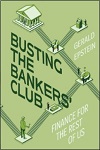
By Pam Martens and Russ Martens: January 23, 2024 ~ Gerald Epstein is Professor of Economics and a Founding Co-Director of the Political Economy Research Institute (PERI) at the University of Massachusetts, Amherst. A book he has spent the past decade researching and writing comes out today from the University of California Press: Busting the Bankers’ Club: Finance for the Rest of Us. Anticipation of this book’s release has caused some sweaty brows in the halls of Congress, on Wall Street, at Big Law, and in the economics community. That’s because Epstein is naming names – the names of the people who have sold out American democracy and the public interest by becoming sycophants for, or actual members of, the Bankers’ Club. The Chairman of the Bankers’ Club is the Federal Reserve, writes Epstein. That’s because the Fed has strongarmed its way to becoming both the supervisor of the Wall Street mega … Continue reading
A Fed Whistleblower Reveals Efforts to Silence Him 30 Years Ago

By Pam Martens and Russ Martens: January 22, 2024 ~ The U.S. Department of Justice needs to immediately appoint an independent Special Counsel to investigate how long and in how many ways the U.S. Central Bank (the Federal Reserve or simply “the Fed”) has been functioning as a protection racket for Wall Street mega banks. We’ll get to the latest revelation about the Fed bullying and intimidating a Fed official in a moment, but first some necessary background. In 2013 the American people learned that Carmen Segarra had been a bank examiner with a law degree at the Federal Reserve Bank of New York, one of Wall Street’s key regulators. Segarra charged in a Federal lawsuit that she was bullied by colleagues to change her negative examination of the powerful Wall Street mega bank, Goldman Sachs. Segarra detailed how her colleagues also obstructed and interfered with her investigation. When she refused to … Continue reading
Everything that’s Dangerous about U.S. Banks Today in One Highly Readable Book
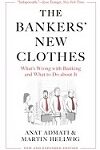
By Pam Martens: January 17, 2024 ~ Anat Admati, Professor of Finance and Economics at Stanford Graduate School of Business, and German economist Martin Hellwig, have performed a public service to all Americans with their newly released, updated and expanded book The Bankers’ New Clothes: What’s Wrong with Banking and What to Do about It. It puts the interlocking web of corruption that is mistakenly referred to as the U.S. banking system into a pristinely documented and highly readable book. Let us first explain those men without pants on the book jacket. That provocative graphic comes from the storyline in the Hans Christian Andersen tale “The Emperor’s New Clothes.” Tailors offer to make the emperor magical clothes that will be visible only to smart people and invisible to the stupid and unfit. When the emperor’s ministers go to inspect the clothes, they see nothing, but they are fearful of being called … Continue reading
Jamie Dimon Hires Dodd-Frank Hatchet Man to Weigh Suing the Fed Over Proposed Capital Rules
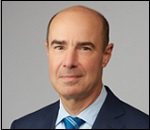
By Pam Martens and Russ Martens: January 16, 2024 ~ Jamie Dimon is the Chairman and CEO of the largest federally-insured, taxpayer-backstopped bank in the United States, JPMorgan Chase. Through much of Dimon’s tenure, JPMorgan Chase has also been designated as the riskiest bank in the United States by its regulators. And despite its unprecedented criminal history, the U.S. Department of Justice keeps handing the bank deferred-prosecution agreements or non-prosecution agreements with the casualness of a carnival barker tossing out penny candy. Dimon’s Board of Directors is too compromised itself to reform the bank and fire Dimon. (See here, here and here.) So all that remains as a potential restraint on this criminally-inclined banking behemoth is the bank’s federal regulators. On July 27 of last year, the Federal Reserve, FDIC and Office of the Comptroller of the Currency (OCC) – JPMorgan Chase’s bank regulators — released a proposal to require higher capital levels … Continue reading
Out Today: A Deep Dive into the Dark Side of Banking and Its Handmaiden, Central Banks

By Pam Martens and Russ Martens: January 9, 2024 ~ Last September, speaking at a conference sponsored by the nonprofit watchdog, Better Markets, to examine if “too big to fail” banks had materially changed in the fifteen years since the 2008 financial collapse, Anat Admati, Professor of Finance and Economics at Stanford Graduate School of Business, offered her assessment of the U.S. banking system: “Corruption has become the system.” Today, Admati’s celebrated 2013 book, The Bankers’ New Clothes: What’s Wrong with Banking and What to Do about It, co-authored with German economist Martin Hellwig, is being released in an expanded new edition. It is a must read for every American who is bold enough to remove their media tinted, rose-colored glasses and take a hard look at how the U.S. banking system got into the mess it’s in today. Although written by serious academics, the book provides a courageous, fascinating, and easily digestible … Continue reading
Bill Dudley, Former Kingpin of Darkness at the New York Fed, Now Urges Transparency at the Fed
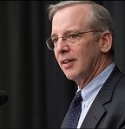
By Pam Martens and Russ Martens: January 4, 2024 ~ William (Bill) Dudley served as President of the New York Fed from 2009 to 2018. (He was previously an executive at Goldman Sachs.) During Dudley’s tenure at the New York Fed, it secretly oversaw the largest and darkest bailout of Wall Street mega banks in global banking history. A Bloomberg News reporter, the late Mark Pittman, battled in court for years to get the details of those bailouts released to the public. Today, the former kingpin of darkness at the New York Fed, Bill Dudley, had the audacity to pen an opinion column for Bloomberg News, urging – wait for it – more transparency at the Fed. The ironic title of Dudley’s column is (paywall): “If Only We Knew the Problems Facing America’s Banks.” (We do. See Federal Agency Study Contradicts Fed Chair: Finds Banking System Is Ripe for Another Crisis and … Continue reading
A Big Picture Look at Our Major Wall Street Corruption Stories of 2023

By Pam Martens and Russ Martens: December 28, 2023 ~ The year 2023 will go down in U.S. banking history as the year in which the fastest bank runs in U.S. history occurred, producing the second, third and fourth largest banking failures in U.S. history in the span of seven weeks. Losses of more than $32 billion from these failed banks hit the Federal Deposit Insurance Fund (FDIC). Adding to the regulatory hubris, the largest and riskiest bank in the U.S., JPMorgan Chase, was allowed by its compromised regulators to become even riskier by gobbling up the failed First Republic Bank while JPMorgan Chase got an unexplained $50 billion 5-year loan from the FDIC at an undisclosed interest rate to sweeten its purchase of the failed bank. And, what good is a banking crisis if the Fed can’t pony up yet another bank bailout fund, this time with loans of up to … Continue reading
These Are the Bank Bailout Charts the Fed Hopes You’ll Never See in One Place
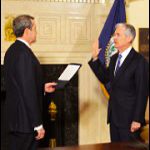
By Pam Martens and Russ Martens: December 20, 2023 ~ Jerome Powell became the Chairman of the Federal Reserve on February 5, 2018 after being nominated by then President Donald Trump and passing his Senate confirmation. Powell was sworn in again on May 23, 2022 for a second term as Chair. His second term runs until May 15, 2026. Unlike most Fed Chairs, Powell has no economics degree. He has a law degree from Georgetown University. For more background on Powell, see our May 18, 2020 article: The Fed’s Chair and Vice Chair Got Rich at Carlyle Group, a Private Equity Fund with a String of Bankruptcies and Job Losses. Powell’s tenure as Fed Chair has been mired by the biggest trading scandal in the Federal Reserve’s 110-year history. That scandal has yet to be resolved in a manner that meets the test of accountability. See our October report: After Two Years, … Continue reading

